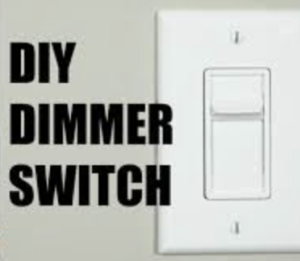
A dimmer switch is a device that allows users to adjust the brightness of lights, offering flexibility in ambiance and energy efficiency. Unlike standard switches, dimmers control light intensity by modulating electrical voltage. This article explores the mechanics, types, compatibility, installation, and benefits of dimmer switches, providing a comprehensive guide for homeowners and enthusiasts.
How Dimmer Switches Work
Phase-Cut Dimming
Dimmers reduce light output by “chopping” parts of the AC voltage waveform. Two primary methods are used:
Leading-Edge (Triac) Dimming: Cuts the front half of the waveform. Commonly used with incandescent/halogen bulbs and magnetic low-voltage (MLV) transformers.
Trailing-Edge (ELV) Dimming: Cuts the latter half, suitable for LED/CFL bulbs and electronic low-voltage (ELV) transformers. This method minimizes flicker and noise in modern lighting.
Electronic Low-Voltage (ELV) Dimmers
Designed for LED and low-voltage systems, these trailing-edge dimmers ensure smoother performance but require compatible drivers.
Pulse-Width Modulation (PWM)
Used in DC circuits (e.g., LED strips), PWM rapidly switches power on/off to control brightness. Not typical for household AC dimmers.
Types of Dimmer Switches
Rotary: Adjust brightness via a knob.
Slide/Toggle: Use a slider or toggle for precision.
Touch/Smart: Touch-sensitive or app-controlled (e.g., Lutron Caséta, Philips Hue).
Specialty Dimmers:
Fan Dimmers: Regulate fan speed (not standard bulbs).
Universal Dimmers: Compatible with both leading- and trailing-edge loads.
Compatibility Considerations
Bulb Types
Incandescent/Halogen: Work with most dimmers.
CFL/LED: Require dimmable bulbs and compatible dimmers. Check packaging for certification (e.g., “UL Listed for LED”).
Load Requirements
Minimum/Maximum Wattage: Exceeding limits causes malfunction. For LEDs, calculate total wattage (e.g., 10x 8W bulbs = 80W).
Neutral Wire: Smart dimmers often need a neutral; older homes may require no-neutral models (risk of “ghosting” with LEDs).
Installation Guidelines
Wiring Basics
Single-Pole: One switch controls the light.
Three-Way: Two switches control one light; use a compatible three-way dimmer.
Safety & Codes
Follow NEC (National Electrical Code) guidelines.
Ensure proper box size to prevent overheating.
Use UL/CE-certified products.
DIY vs Professional
DIY feasible for experienced users; consult an electrician for complex setups (e.g., multi-location dimming).
Smart Dimmer Switches
Protocols: Wi-Fi, Zigbee, Z-Wave, or proprietary (e.g., Lutron Clear Connect).
Features: Voice control (Alexa/Google), scheduling, remote access.
Hubs: Some require a bridge (e.g., Philips Hue); others connect directly via Wi-Fi.
Troubleshooting Common Issues
Flickering/Buzzing: Incompatible bulb/dimmer or underloading. Fix by adding a dummy load or using a compatible dimmer.
Ghosting: Faint glow when off. Caused by neutral wire issues; use a no-neutral dimmer or install a bypass capacitor.
Energy Efficiency & Cost Savings
Power Savings: Dimming LEDs to 50% can reduce energy use by ~40%. Incandescents save less due to inherent inefficiency.
Lifespan: Dimming extends bulb life by reducing heat and stress.
Design & Aesthetics
Styles: Match decor with designs like Decora, toggle, or vintage.
Size: Ensure dimmer fits in the electrical box; some models are bulkier.
Cost Analysis
Basic Dimmers: 10–20 (rotary/slide).
Smart Dimmers: 50–100+ (plus hub if required).
Professional Installation: 50–150 per switch.
Historical Evolution
1890s: Granville Woods patented early dimmer concepts.
1960s: Joel Spira (Lutron) pioneered solid-state TRIAC dimmers, revolutionizing home lighting.
Conclusion
Dimmer switches enhance lighting flexibility, energy efficiency, and ambiance. Key considerations include compatibility, proper installation, and load requirements. Smart dimmers offer advanced control but may require additional investment. Always verify bulb and dimmer compatibility to avoid issues like flickering or damage. By understanding these factors, users can optimize their lighting systems for both functionality and style.
- Everything You Need To Know About Limit Switch - May 21, 2025
- Everthing You Should Know About Rheostat - May 20, 2025
- Everything You Need To Know About Reversing Contactor - May 19, 2025






